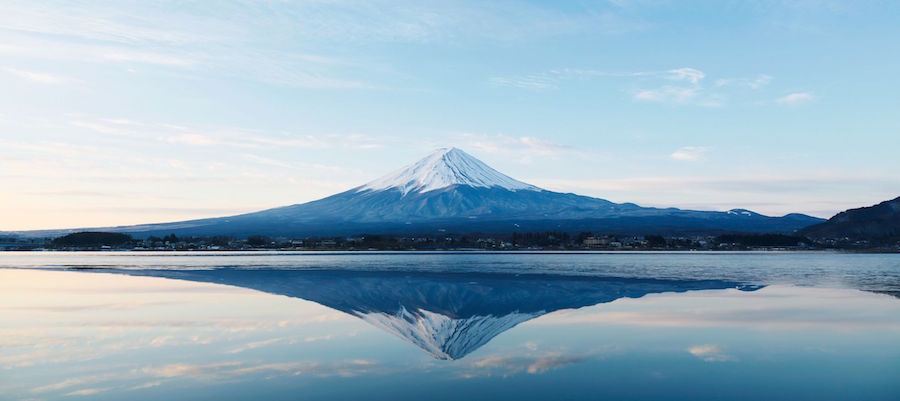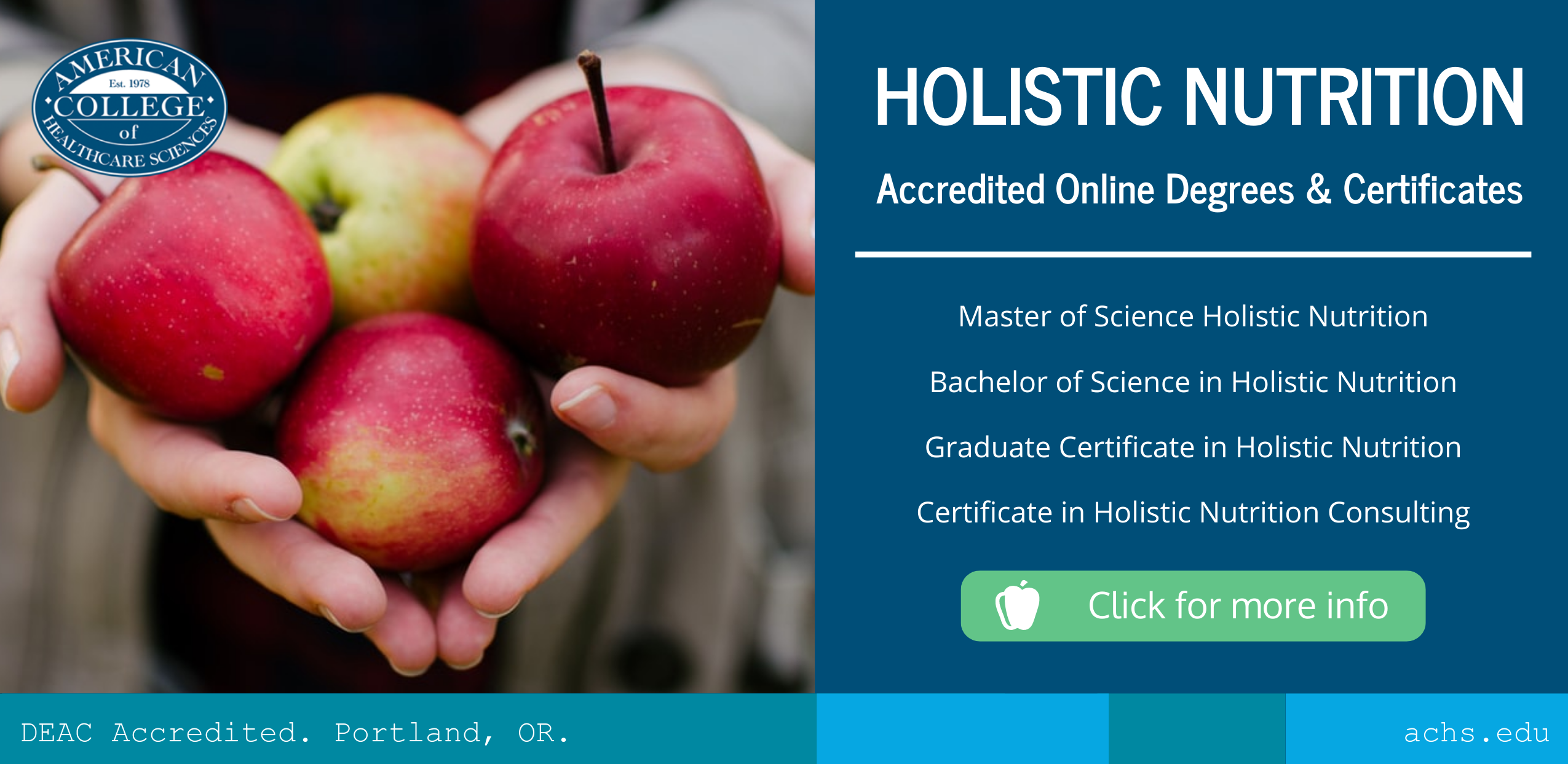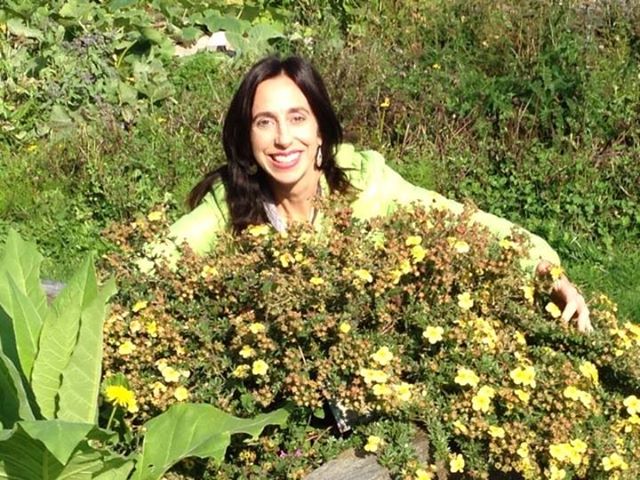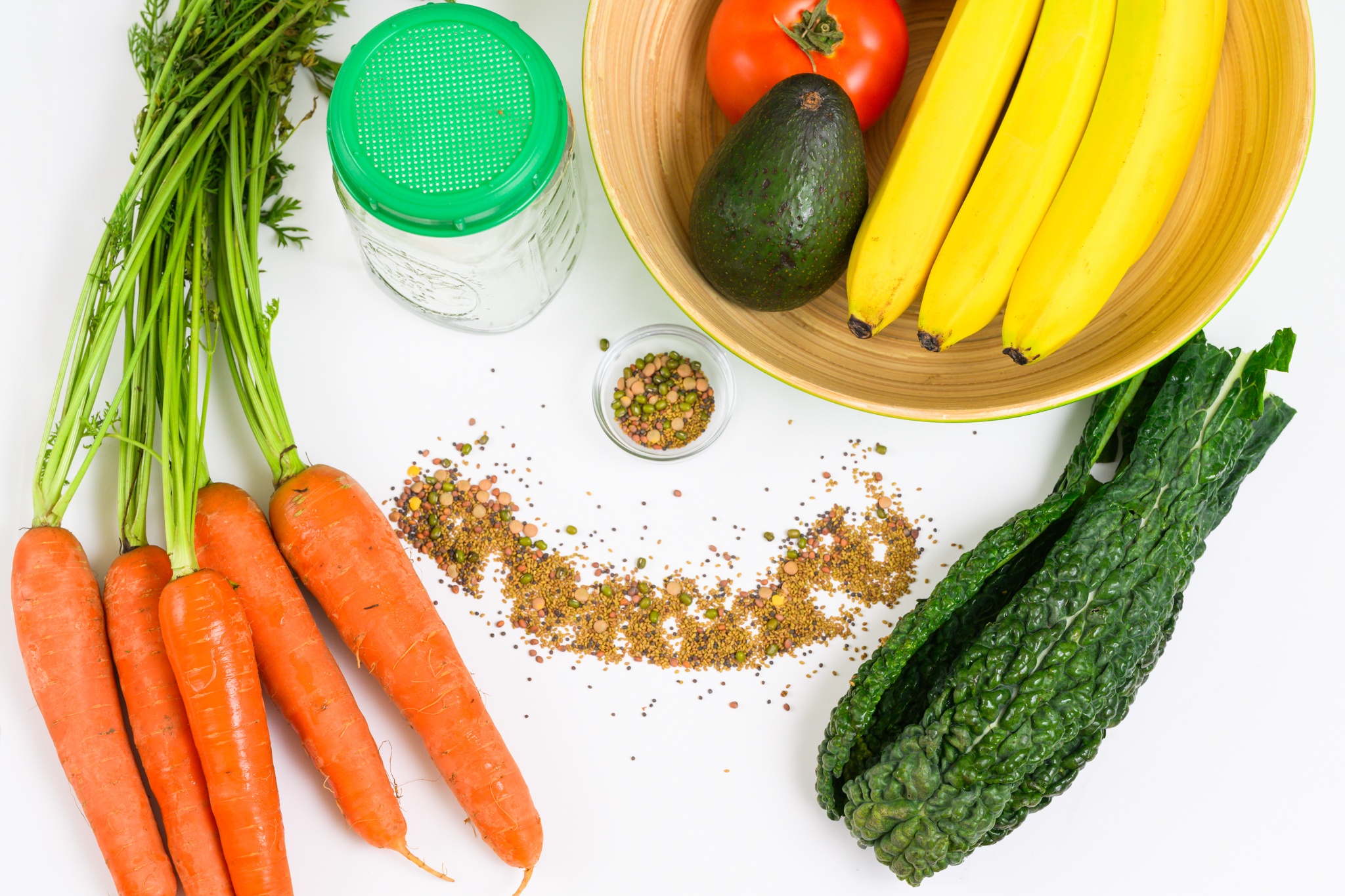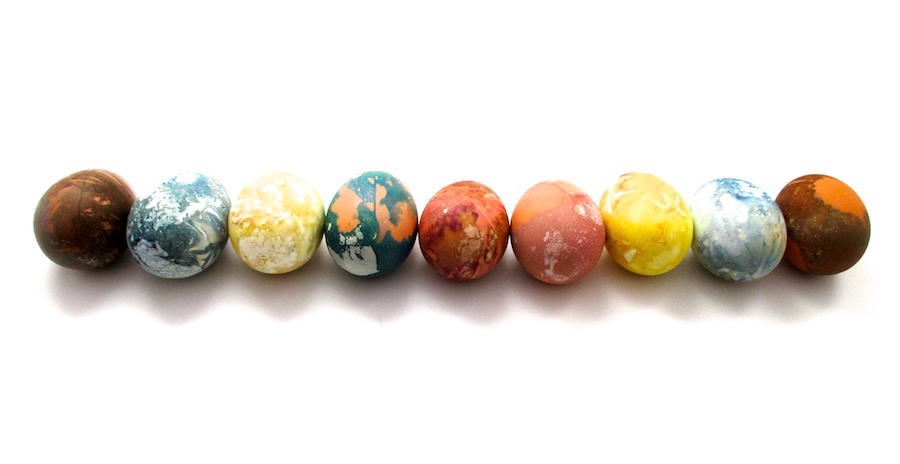By Lisa Powell & American College of Healthcare Sciences
Are you going to win the genetic lottery and live to be 100 years old? Or, perhaps, the better question is: If you could, would you want to live to be 100?
Many people assume that living to be 100, or even past 80, comes with a lot of pain and suffering. Sadly, today we see much pain and suffering in people in their younger years, so age may not be the solid benchmark between “good” and “failing” health it once was.In fact, the Centers for Disease Control and Prevention (CDC) reports:
Seven of the top 10 leading causes of death are the result of chronic diseases, which are among the most common, costly, and preventable of all health problems in the United States (16). Heart disease and cancer alone account for nearly half of all lives lost each year. Many of these deaths, as well as those from stroke, diabetes, and other chronic illnesses could have been delayed, and quality of life could have been improved, through health promoting behaviors, including healthy diet, physical activity, avoidance of tobacco, and other types of risk reduction[1].
A study by the CDC also reports that the number of centenarians (Americans who are 100 years or older) “has grown by 44% in recent years, from 50,281 in 2000 to 72,197 in 2014[2].”
We’re living in the times the healthcare industry refers to as the “Silver Tsunami,” as we are faced with 10,000 baby boomers turning 65 each day in the U.S. But, this isn’t just a U.S. phenomenon. “In the next 25 years, the number of people older than 65 will double. The average life expectancy is expected to rise to 110 by 2030,” Forbes reports. “As the number of senior people rises in many economies of the world, the need for long-term care and aging-in-place services will increase. This will escalate the burden on healthcare in many countries[3].”
Knowing that many of the burdensome health challenges can be prevented, or at least reduced, is encouraging for those of us striving for a vital life. A healthy lifespan can be achieved if we are willing to work on our own prescription for health and happiness.
What does this entail? Another “key” anti-aging remedy?
Anti-aging is a multibillion-dollar industry, and we are information-overloaded with the latest super fruit or skin product to look and feel younger. While there may be some validity to using a specific nutrient or skin product, there really isn’t one product that holds the ultimate “key” to anti-aging.
Break-through research into longevity is revealing new insights each year. We can start by following the most researched areas in the world, look at what they have in common with the other researched areas of the world, and dig deeper to understand why and how these regions have produced the greatest number of healthy centenarians.
These specific regions are called the Blue Zones® and they include Ikaria, Greece; Okinawa, Japan; Ogliastra Region, Sardinia; Loma Linda, California; and Nicoya Peninsula, Costa Rica[4].
The term “Blue Zones” was coined by National Geographic fellow Dan Buettner and his research team. National Geographic put together a group of scientists, including medical researchers, anthropologists, and epidemiologists, and identified the regions of the world known as the Blue Regions®, the regions with the greatest number of centenarians. They then set out to find out what the people living in Blue Regions have in common.
The research uncovered nine categories, or habits, now commonly referred to as the Power 9®[5]. Healthy centenarians in the Blue Zones:
#1 Move naturally and “live in environments that constantly nudge them into moving without thinking about it. They grow gardens and don’t have mechanical conveniences for house and yard work.”
#2 Have purpose.
#3 Down shift and prioritize routines that reduce stress. For example, “Okinawans take a few moments each day to remember their ancestors, Adventists pray, Ikarians take a nap and Sardinians do happy hour.”
#4 Follow the 80% Rule and stop eating when they are 80% full. It’s generally thought that people in the Blue Zones “eat their smallest meal in the late afternoon or early evening and then they don’t eat any more the rest of the day.”
#5 Have a plant slant to their diet that favors beans (e.g., fava, black, soy, lentils) over meat.
#6 Drink wine at 5 p.m. It seems that people in all Blue Zones (except for the Adventists in Loma Linda, California) “drink alcohol moderately and regularly.”
#7 Belong to a faith-based community.
#8 Put their loved ones first. “This means keeping aging parents and grandparents nearby or in the home. (It lowers disease and mortality rates of children in the home too.) They commit to a life partner (which can add up to three years of life expectancy) and invest in their children with time and love.”
#9 Found their right tribe, a tribe that supports healthy behaviors.
Many of us will preview this list of nine habits and grade ourselves by checking off all the components we share in common with the Blue Zones. Then we will have our loved ones take the same test. For others, there may even be laughs as they proudly say they fulfill their wine at 5 p.m.! But, there’s likely more to it than that. There’s a common theme in most of these components that connect the threads in a beautiful tapestry of life.
When you study the information on the Blue Zones lifestyle, happiness, and longevity, you see an underlying theme of love, purpose, and connection. In other words… it wasn’t simply the “wine” that reaped the most benefit; otherwise, we may start seeing “wine pills.” Rather, what they found in the Blue Zones was a social component of connectivity that occurs when people drink their wine together, in community.
As life continues to get busier and more stressful, many of us have lost sight of this component. And, in turn, we live in more isolation, especially as our new “bonds” trend toward social media and virtual friends.
Now, think about #2 on the list above: purpose.
How many people have really asked themselves about their life purpose? Can they tell you what it is?
As mentioned in the Power 9 article[6], there is a beloved Japanese concept called “ikigai,” the term for “life worth.” Ikigai connects one’s passion and mission to how they can use their gifts to not only benefit the world, but reap their own benefits.
I also admired the Blue Zones down shift. This had to do with how they handle stress. No matter where we live, stress presents itself. Our relationship with stress is so important to minimize inflammation and chronic disease. I would be excited to see meditation and mindful walks as the “new norm” for many of us dealing with chronic stress.
While I think the Power 9 are all equally important, it’s up to us to find new inspiration in how we can implement some of the components in our lives. For example, I took up “tree bathing,” where I replaced a couple of days of jogging in the city with walking in the forest, admiring the sounds, the smells, and the beauty of the trees.
Several years ago, I started doing a vision board that details my ikigai, and now I have a daily reminder to keep it strong. For my community and tribal needs, as suggested by the Blue Zones, I decided to host campfires at my house in the summer so neighbors and family can attend and feel connected and supported by one another.
I guess the main takeaway today is diet alone isn’t the only component when it comes to a healthy lifespan. That might come as a surprise, especially from a holistic nutritionist. Love, connection, and purpose are also important components that I believe are essential for a healthy lifespan.
This is backed up further by the most recent and longest longitudinal studies at Harvard looking at various socio-economic classes of subjects. Dr. George Valiant, the Harvard psychiatrist who directed the study from 1972 to 2004, concluded that loving relationships keep us happier and healthier. He elaborates and says that finding ways in which we can cope with life without pushing love away, are two very important takeaways from the study[7].
I encourage all of us to take a holistic approach when seeking additional changes that bring forth better health.
[1] Johnson, N., Hayes, L., Brown, K., Hoo, E., & Ether, K. (2014, October 31). CDC national health report: Leading causes of morbidity and mortality and associated behavioral risk and protective factors—United States, 2005–2013. Morbidity and Mortality Weekly Report, 63(04), 3-27. Retrieved from https://www.cdc.gov/mmwr/preview/mmwrhtml/su6304a2.htm
[2] Storrs, C. (2016, January 25). The centenarian tide is on the rise. CNN. Retrieved from http://www.cnn.com/2016/01/25/health/centenarians-increase/index.html
[3] Das, R. (2015, August 11). A silver tsunami invades the health of nations. Forbes. Retrieved from https://www.forbes.com/sites/reenitadas/2015/08/11/a-silver-tsunami-invades-the-health-of-nations/#a57a9193efd6
[4] 5 “blue zones” where the world’s healthiest people live. (2017, April 6). National Geographic. Retrieved from http://www.nationalgeographic.com/books/features/5-blue-zones-where-the-worlds-healthiest-people-live/
[5] Buettner, D. (n.d.). Power 9®: Reverse engineering longevity. Blue Zones. Retrieved from https://bluezones.com/2016/11/power-9/
[6] Buettner, D. (n.d.). Power 9®: Reverse engineering longevity. Blue Zones. Retrieved from https://bluezones.com/2016/11/power-9/
[7] Mineo, L. (2017, April 11). Good genes are nice, but joy is better. Harvard study, almost 80 years old, has proved that embracing community helps us live longer, and be happier. Harvard Gazette. Retrieved from https://news.harvard.edu/gazette/story/2017/04/over-nearly-80-years-harvard-study-has-been-showing-how-to-live-a-healthy-and-happy-life/
This article is for informational purposes only. It is not intended to treat, diagnose, cure, or prevent disease. This article has not been reviewed by the FDA. Always consult with your primary care physician or naturopathic doctor before making any significant changes to your health and wellness routine.
Disclosure of Material Connection: I am a graduate and guest blogger for American College of Healthcare Sciences, the Institution that publishes this blog. However, all opinions are my own. This blog may contain affiliate links. I am disclosing this in accordance with the Federal Trade Commission’s 16 CFR, Part 255: “Guides Concerning the Use of Endorsements and Testimonials in Advertising.”

